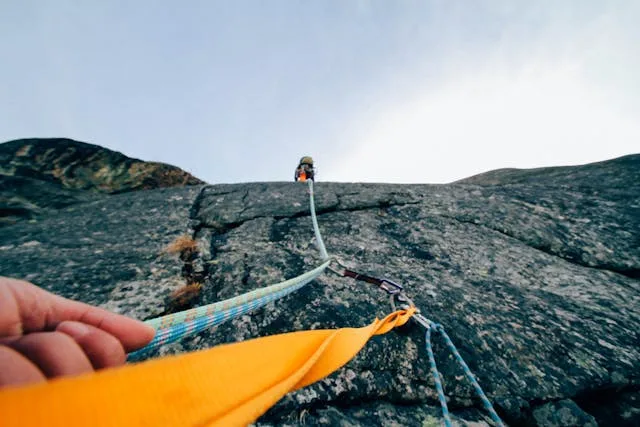Rope climbing beckons to the part of us that yearns to conquer, to defy gravity, and to build unyielding strength. It’s a timeless test of grit, technique, and pure determination. Whether you envision yourself scaling the gym ropes with newfound power or soaring to the top at competitions, this guide will set you on the path to mastering rope climbing.
Contents
 The Benefits of Rope Climbing
The Benefits of Rope Climbing
Explosive Full-Body Power: Every upward pull engages your core, back, shoulders, arms, and even legs for exceptional functional strength development.
Coordination and Agility: Rope climbing demands fluid movement and coordination as you navigate the climb.
Mental Fortitude: Reaching the top requires focus, perseverance, and facing a challenge head-on.
Pure, Unbridled Fun: There’s a childlike joy in conquering a rope climb, a sense of accomplishment unlike any other.
 Rope Climbing Techniques
Rope Climbing Techniques
Two main techniques dominate rope climbing, each offering its own set of challenges:
Legs-Included (Gym Class) Technique
Grip the rope firmly, hands close together.
Engage your core and wrap the rope around one foot, securing it with your other foot.
Pull strongly with your arms while simultaneously driving upward with your legs.
Release your feet and reposition your hands higher on the rope. Repeat.
Legs-Free (Advanced) Technique
Grip the rope tightly, arms shoulder-width apart.
Using purely your upper body, pull with one arm while repositioning the other hand higher.
Continue alternating grips in a smooth upward motion using powerful arm pulls.
 Mastering Your Rope Climb
Mastering Your Rope Climb
Start with the basics: Even if your goal is the legs-free style, mastering the leg-assisted technique will build essential upper body strength.
Train for Power: Incorporate pull-ups, rows, and core exercises into your workouts to enhance your climbing prowess.
Practice Makes Perfect: Dedicate time to rope climbing drills, working on technique and efficiency of movement.
Grip Strength is Key: Hangboard training and grip exercises can significantly improve your rope climbing stamina.
 Rope Climbing in Competition
Rope Climbing in Competition
Rope climbing continues to inspire with events like the World Police and Fire Games and climbing competitions across the globe. If competition calls to you, specialized training includes:
Speed Focus: Workouts emphasizing quick movements and short bursts of power.
Endurance Conditioning: Increase your ability to sustain multiple climbs or longer distances.
Footwork Agility: Practice precision foot techniques for maximum efficiency in the legs-included climb.
 Tips for Success
Tips for Success
Chalk Up: Use chalk for enhanced grip and sweat management.
Don’t Be Afraid to Fall: Focus on improving your descent, by practicing controlled slides.
Find Your Rhythm: Discover a comfortable and consistent pace for your climb.
Don’t Give Up: Each ascent builds strength—celebrate every upward inch!
FAQ
Q: Are there specific rope types for rope climbing?
A: Yes, specialized static climbing ropes with minimal stretch are ideal for safety and efficiency.
Q: Can rope climbing be dangerous?
A: Like any sport, risks exist when proper safety isn’t practised. With correct belaying techniques (for belay-style climbs) and a safe gym environment, these risks are significantly reduced.
Q: Do I need special shoes for rope climbing?
A: Though not mandatory, climbing shoes with sticky rubber soles can aid in foot placements. However, regular athletic shoes can also suffice.
Q: Are there age restrictions for rope climbing?
A: Most climbing gyms welcome younger climbers with age-specific guidelines. Children often excel at rope climbing due to their natural agility!
Embrace the Challenge
Whether you conquer the rope climb for the thrill, the workout, or the competitive edge, let its simple challenge elevate you to new heights of strength and resilience. With each upward pull, you’re not only scaling a rope but pushing your own limits just a little bit further.
For more of the latest blog posts, visit: Best Solo Female Travel

 The Benefits of Rope Climbing
The Benefits of Rope Climbing Rope Climbing Techniques
Rope Climbing Techniques Mastering Your Rope Climb
Mastering Your Rope Climb Rope Climbing in Competition
Rope Climbing in Competition Tips for Success
Tips for Success